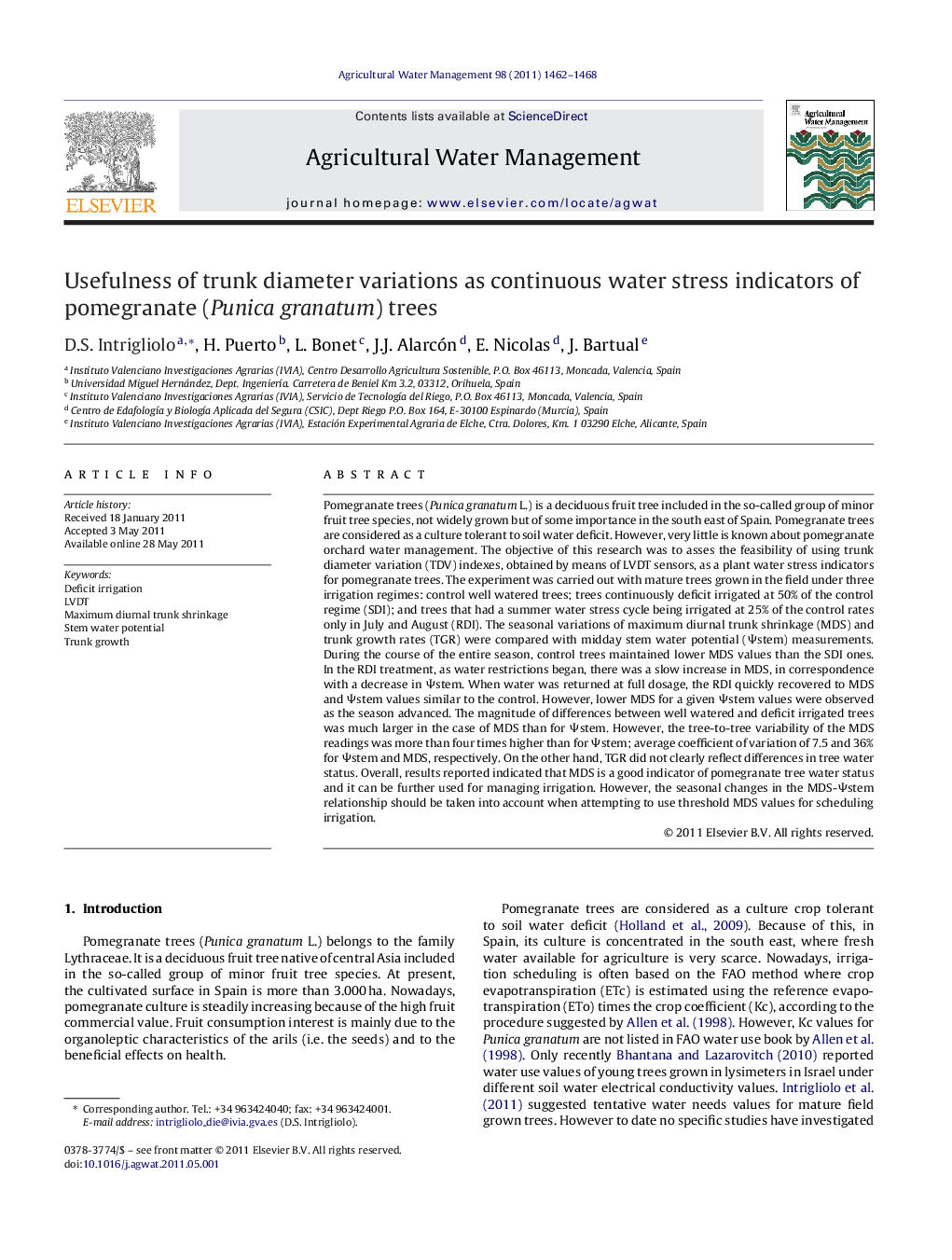| کد مقاله | کد نشریه | سال انتشار | مقاله انگلیسی | نسخه تمام متن |
|---|---|---|---|---|
| 4479436 | 1316442 | 2011 | 7 صفحه PDF | دانلود رایگان |

Pomegranate trees (Punica granatum L.) is a deciduous fruit tree included in the so-called group of minor fruit tree species, not widely grown but of some importance in the south east of Spain. Pomegranate trees are considered as a culture tolerant to soil water deficit. However, very little is known about pomegranate orchard water management. The objective of this research was to asses the feasibility of using trunk diameter variation (TDV) indexes, obtained by means of LVDT sensors, as a plant water stress indicators for pomegranate trees. The experiment was carried out with mature trees grown in the field under three irrigation regimes: control well watered trees; trees continuously deficit irrigated at 50% of the control regime (SDI); and trees that had a summer water stress cycle being irrigated at 25% of the control rates only in July and August (RDI). The seasonal variations of maximum diurnal trunk shrinkage (MDS) and trunk growth rates (TGR) were compared with midday stem water potential (Ψstem) measurements. During the course of the entire season, control trees maintained lower MDS values than the SDI ones. In the RDI treatment, as water restrictions began, there was a slow increase in MDS, in correspondence with a decrease in Ψstem. When water was returned at full dosage, the RDI quickly recovered to MDS and Ψstem values similar to the control. However, lower MDS for a given Ψstem values were observed as the season advanced. The magnitude of differences between well watered and deficit irrigated trees was much larger in the case of MDS than for Ψstem. However, the tree-to-tree variability of the MDS readings was more than four times higher than for Ψstem; average coefficient of variation of 7.5 and 36% for Ψstem and MDS, respectively. On the other hand, TGR did not clearly reflect differences in tree water status. Overall, results reported indicated that MDS is a good indicator of pomegranate tree water status and it can be further used for managing irrigation. However, the seasonal changes in the MDS-Ψstem relationship should be taken into account when attempting to use threshold MDS values for scheduling irrigation.
► In mature pomegranate trees, maximum diurnal trunk shrinkage (MDS) can be used as an indicator of plant water status while trunk growth rate was not able to detect differences in plant water status.
► There was not a unique relationship between MDS and midday stem water potential (Ψstem) valid for the entire growing season.
► For similar plant water status levels, lower MDS values were obtained by the end of the season.
► The magnitude of differences between well watered and deficit irrigated trees was much larger in the case of MDS than for midday stem water potential (Ψstem).
► The tree-to-tree variability of the MDS readings was four times higher than for Ψstem.
Journal: Agricultural Water Management - Volume 98, Issue 9, July 2011, Pages 1462–1468